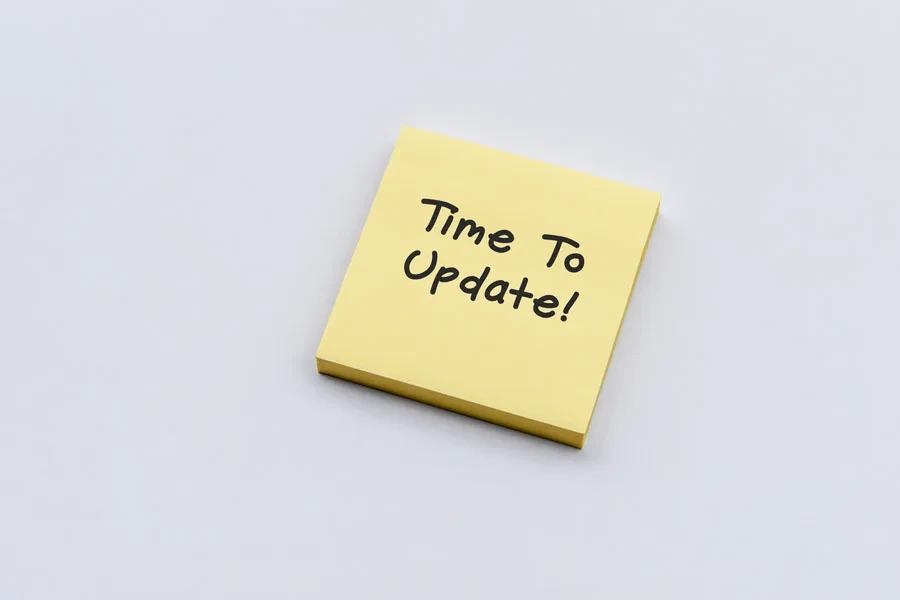Memahami perjalanan pelanggan Anda dapat menjadi sebuah tantangan. Setiap pengguna memiliki alasan berbeda untuk terlibat dengan bisnis Anda dan jalur unik untuk mengakses halaman online Anda sebelum akhirnya membeli produk Anda.
Oleh karena itu, bagaimana Anda dapat memastikan bahwa Anda memperoleh wawasan berharga tentang pelanggan Anda untuk meningkatkan kinerja mereka pengalaman pengguna dan memahami kebiasaan pembelian mereka? Melalui pembuatan peta perjalanan pelanggan. Panduan ini akan mengeksplorasi apa saja yang diperlukan dalam peta perjalanan pelanggan dan memberi Anda langkah-langkah untuk membuatnya. Teruslah membaca untuk mempelajari lebih lanjut.
Daftar Isi
Apa itu peta perjalanan pelanggan?
Langkah-langkah membuat peta perjalanan pelanggan
Kesimpulan
Apa itu peta perjalanan pelanggan?

Perjalanan pelanggan secara visual mewakili interaksi pelanggan dengan sebuah perusahaan, menyoroti pengalaman mereka mulai dari kontak awal hingga dukungan pasca pembelian. Laporan ini memberikan wawasan berharga mengenai kebutuhan dan keinginan calon pelanggan di setiap tahap perjalanan, serta faktor-faktor yang memfasilitasi atau menghambat kemajuan mereka.
Memetakan perjalanan ini membantu Anda lebih memahami perspektif pelanggan, mengidentifikasi titik kesulitan, dan mengoptimalkan titik kontak untuk meningkatkan pengalaman pelanggan mereka secara keseluruhan, sehingga meningkatkan kepuasan dan loyalitas pelanggan.
Cara membuat peta perjalanan pelanggan
Membuat peta perjalanan pelanggan memerlukan serangkaian langkah yang diikuti dengan cermat. Berikut langkah-langkah yang harus Anda ikuti saat membuat peta:
1. Gunakan templat perjalanan pelanggan

Daripada memulai dari awal, Anda dapat memanfaatkan template perjalanan pelanggan yang telah teruji dan telah diadopsi oleh banyak pengusaha secara global. Templat ini dapat membantu perwakilan penjualan dan pemasaran serta tim dukungan Anda mempelajari lebih lanjut tentang kepribadian pelanggan Anda, yang pada akhirnya menghasilkan produk yang lebih baik dan lebih baik. pengalaman pelanggan.
Ada berbagai jenis templat perjalanan pelanggan yang dapat Anda pilih. Namun, memilih template akan sepenuhnya bergantung pada jenis tujuan yang Anda miliki. Templat tersebut adalah sebagai berikut:
Templat keadaan saat ini
Keadaan saat ini adalah template paling populer, yang memeriksa tindakan, pikiran, dan emosi pelanggan saat ini selama interaksi dengan bisnis Anda. Ini mengidentifikasi titik kesulitan dengan baik dan secara efektif memandu perubahan bertahap untuk meningkatkan pengalaman pelanggan secara keseluruhan.
| Perjalanan pelanggan: Kondisi saat ini | Langkah 1 | Langkah 2 | Langkah 3 | Langkah 4 | Langkah 5 |
| Apa yang dipikirkan atau dirasakan pelanggan? | |||||
| Apa tindakan pelanggan? | |||||
| Apa titik kontak pelanggan dengan bisnis ini? | |||||
| Apa yang ingin kita ubah dari langkah ini? | |||||
| Bagaimana dan/atau mengapa kita melakukan perubahan ini? |
Templat negara bagian di masa depan
Templat keadaan masa depan mengarahkan perhatian pada tindakan, pemikiran, dan emosi pelanggan yang diantisipasi dalam interaksi mendatang. Hal ini terbukti berharga untuk mengilustrasikan bagaimana pelanggan akan merespons produk, layanan, dan pengalaman baru, memberikan gambaran yang jelas untuk perencanaan dan menerapkan strategi selaras dengan harapan masa depan.
| Perjalanan pelanggan: Keadaan masa depan | Langkah 1 | Langkah 2 | Langkah 3 | Langkah 4 | Langkah 5 |
| Apa yang dipikirkan atau dirasakan pelanggan? | |||||
| Apa tindakan pelanggan? | |||||
| Apa titik kontak pelanggan dengan bisnis ini? | |||||
| Apa yang ingin kita ubah dari langkah ini? | |||||
| Bagaimana dan/atau mengapa kita melakukan perubahan ini? |
Templat sehari-hari
Templat peta perjalanan pelanggan sehari-hari meniru templat keadaan saat ini, menangkap perilaku, pemikiran, dan emosi pelanggan saat ini. Namun, ini lebih dari sekadar interaksi individu dengan merek Anda, mengeksplorasi caranya pelanggan terlibat dengan rekan-rekan di daerah tersebut.
Templat ini berfungsi paling baik untuk menginspirasi inisiatif baru dan mengidentifikasi kebutuhan pasar yang belum terpenuhi.
| Perjalanan pelanggan: Suatu Hari dalam Kehidupan | Dini hari | Larut pagi | Sore | Sore sore | Waktu malam |
| Apa yang dipikirkan atau dirasakan pelanggan? | |||||
| Apa tindakan atau prioritas utama pelanggan? | |||||
| Apa titik kontak pelanggan saat ini? | |||||
| Bagaimana pelanggan berinteraksi dengan produk kita saat ini? | |||||
| Bagaimana pelanggan dapat memanfaatkan produk kita dengan lebih baik saat ini? |
Templat cetak biru layanan
Templat ini dimulai dengan versi ringkas peta perjalanan keadaan saat ini atau masa depan, yang terdiri dari jaringan individu, metodologi, proses, dan teknologi yang terintegrasi untuk memberikan pengalaman pelanggan yang efisien, berorientasi pada masa kini atau masa depan.
Meskipun cetak biru negara bagian saat ini menunjukkan titik-titik permasalahan yang ada, membantu dalam identifikasi masalah, cetak biru negara bagian di masa depan membantu menciptakan lingkungan yang penting untuk pengalaman pelanggan yang terencana.
| Perjalanan pelanggan: Layanan dan dukungan | Penggunaan normal | Pemberitahuan masalah atau memiliki keluhan | Meminta bantuan/menghubungi dukungan | Berbicara dengan dukungan atau perwakilan | Menyelesaikan konflik atau masalah |
| Apa yang dipikirkan atau dirasakan pelanggan? | |||||
| Mengapa pelanggan merasa seperti ini? | |||||
| Bagaimana kita berkomunikasi dengan pelanggan? | |||||
| Tindakan apa yang kita ambil di latar belakang? |
2. Tetapkan tujuan yang jelas untuk peta tersebut

Saat membuat peta perjalanan pelanggan baru, mendefinisikan tujuan Anda dengan jelas sangatlah penting. Baik itu meningkatkan kepuasan pelanggan secara keseluruhan atau menargetkan isu-isu spesifik seperti mengurangi keluhan tentang keterlambatan pengiriman, memahami tujuan Anda membantu menentukan titik kontak mana yang akan dipetakan.
Tujuan yang luas mungkin memerlukan pemetaan seluruh pengalaman pelanggan, yang mencakup beberapa peta perjalanan. Namun, tujuan spesifik memungkinkan pendekatan yang lebih terfokus, memusatkan upaya pada area tertentu dalam organisasi, seperti departemen gudang, pengiriman, dan layanan pelanggan.
3. Kumpulkan informasi

Setelah Anda menetapkan tujuan peta, langkah selanjutnya adalah mengumpulkan informasi. Hal ini karena untuk memahami alasan pelanggan berinteraksi dengan organisasi Anda, Anda perlu melihat apa yang memotivasi mereka, preferensi mereka, dan perilaku mereka.
Anda bisa mempekerjakan berbagai metode penelitian, termasuk riset pasar, kelompok fokus, survei, analitik, dan wawancara, untuk mengumpulkan informasi pelanggan. Alat-alat ini memberikan wawasan berharga tentang interaksi pelanggan, waktu dan durasi interaksi ini, serta ekspektasi yang ditimbulkannya terhadap pengalaman.
Informasi yang Anda miliki akan membantu Anda menciptakan persona pembeli (representasi fiktif dari pelanggan ideal Anda berdasarkan penelitian dan data yang akan memandu upaya pemasaran yang ditargetkan), yang membantu dalam mengenali kebutuhan dan preferensi pelanggan tertentu.
4. Identifikasi titik kontak pelanggan Anda

Pelanggan terlibat dengan merek Anda melalui beragam titik kontak, termasuk aktivitas di dalam toko, penelusuran online, media sosial, panggilan telepon, blog, meja bantuan, kampanye email, layanan obrolan online, konferensi, demonstrasi produk, dan panggilan penjualan.
Setelah Anda mengidentifikasi titik kontak ini, pertimbangkan dampaknya terhadap pelanggan Anda. Misalnya, jika terjadi masalah, siapa yang mereka hubungi? Di mana orang dapat mencari informasi terkait pengiriman? Apakah mudah bagi mereka untuk mendapatkan informasi kontak Anda?
Meskipun memiliki tim layanan pelanggan yang sangat baik yang siap menjawab pertanyaan, jika tim penjualan atau situs web Anda memberikan informasi yang tidak konsisten atau tidak akurat, pelanggan Anda mungkin tidak menerima layanan yang sangat baik—sebaliknya, mereka akan bingung.
5. Pahami sumber daya yang tersedia

Setelah mengidentifikasi titik kontak, selanjutnya adalah menentukan sumber daya yang tersedia dan sumber daya yang Anda perlukan.
Peta perjalanan pelanggan Anda menyentuh hampir setiap bagian bisnis Anda, menyoroti semua sumber daya yang terlibat dalam menciptakan pengalaman pelanggan. Misalnya, jika peta Anda menunjukkan bahwa tim Anda tidak memiliki alat yang diperlukan untuk menindaklanjuti pelanggan, Anda dapat menggunakannya untuk merekomendasikan investasi pada alat layanan pelanggan. tiket meja bantuan, CRM, obrolan langsung, dasbor pelaporan, dan perangkat lunak manajemen email adalah alat layanan pelanggan yang umum digunakan.
Dengan memasukkan alat-alat ini ke dalam peta Anda, Anda dapat memperkirakan dampaknya terhadap bisnis Anda, misalnya, meningkatkan penjualan atau meningkatkan ROI Anda.
6. Lakukan sendiri perjalanan pelanggan

Untuk meningkatkan efektivitas pembuatan peta perjalanan pelanggan, penting untuk mengalami sendiri proses yang diuraikan dalam peta. Hal ini melibatkan menempatkan diri Anda pada posisi pelanggan, memungkinkan Anda memperoleh wawasan berharga tentang potensi tantangan dan titik kesulitan.
Pendekatan praktis ini mengubah konsep teoretis menjadi observasi praktis, sehingga mengungkap area yang perlu ditingkatkan atau dioptimalkan. Anda dapat terlibat dengan berbagai titik kontak seperti media sosial, email, dan pencarian online, yang akan membantu Anda mengidentifikasi titik hambatan dan mengukur pengalaman pelanggan secara keseluruhan. Pada akhirnya, ini memungkinkan Anda menyempurnakan strategi Anda, meningkatkan kepuasan dan loyalitas.
7. Analisis hasil

Setelah merancang dan menguji peta Anda, langkah penting yang melibatkan analisis hasilnya. Peta lengkap Anda harus dapat menjawab pertanyaan seperti, Apa yang mendorong pengguna keluar dari situs Anda tanpa menyelesaikan pembelian? Bagaimana dukungan pelanggan dapat ditingkatkan?
Menganalisis temuan akan memberi tahu Anda di mana kebutuhan klien tidak terpenuhi. Dan jika ada sesuatu yang terlewat, masih ada ruang untuk perbaikan. Dengan cara ini, Anda dapat memastikan bahwa Anda menawarkan pengalaman berharga sekaligus meyakinkan pelanggan bahwa Anda dapat menyelesaikan masalah mereka dengan bantuan dari perusahaan Anda.
8. Perbarui peta Anda seiring waktu

Kunjungi kembali dan perbarui peta perjalanan pelanggan Anda secara berkala seiring perkembangan situs web Anda untuk memastikan peta tersebut selaras dengan kebutuhan dan sasaran pengguna. Selain itu, analisis data untuk memberikan wawasan tentang peningkatan situs web yang diinginkan.
Baik itu menyempurnakan tautan ajakan bertindak atau menyempurnakan deskripsi produk, perubahan tersebut harus secara langsung mengatasi masalah pelanggan yang diidentifikasi melalui analisis data. Pembaruan ini efektif terlepas dari bagaimana Anda melakukan penskalaan, karena pembaruan ini memenuhi kebutuhan pelanggan Anda.
Dengan memvisualisasikan peta perjalanan pelanggan, Anda memahami dengan jelas pengalaman pengguna, memastikan keselarasan berkelanjutan antara perubahan situs web dan ekspektasi pelanggan dari waktu ke waktu.
Kesimpulan
Saat Anda menyadari perasaan pelanggan terhadap bisnis Anda, Anda dapat memuaskan mereka di setiap langkah perjalanan pembelian mereka. Jangan lupa bahwa banyak hal yang dapat mengubah perjalanan ini, seperti masalah pelanggan, perasaan mereka, dan cara perusahaan Anda melakukan sesuatu.
Peta perjalanan pelanggan adalah cara terbaik untuk melihat semua informasi ini. Baik Anda ingin meningkatkan pengalaman pelanggan atau mencari cara baru untuk membantu pelanggan, panduan ini dapat membantu Anda merencanakan kesuksesan bisnis Anda di masa depan.




